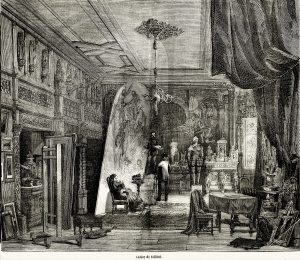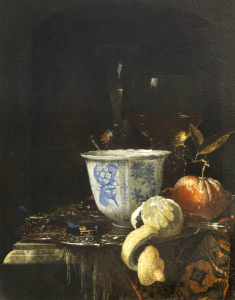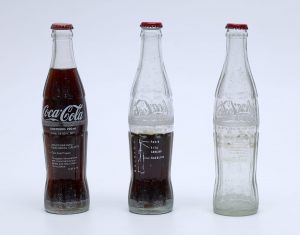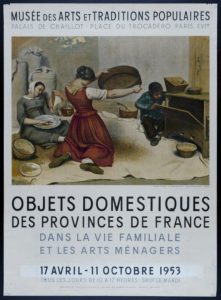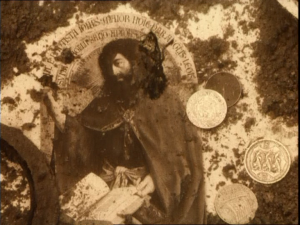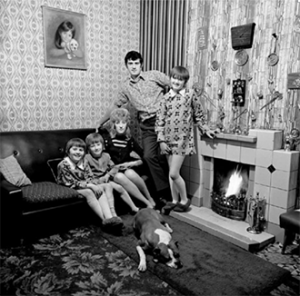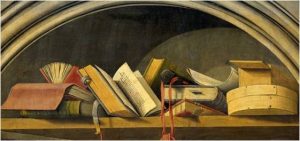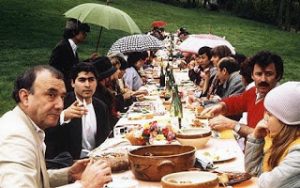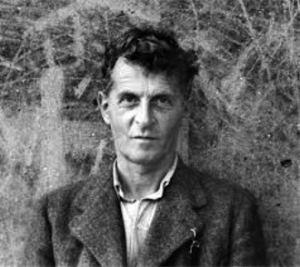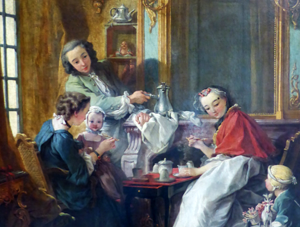In drawing up an inventory of images and things in the nineteenth century, Manuel Charpy shows us how bourgeois domestic interiors ended up resembling still lifes, with curios, assembled in a certain order, accumulating there as within a picture. A painted or photographic portrait of a collector was, in this regard, edifying: his acquisitions ...
Arts & Sociétés
Letter of Seminar
Non classé
-
-
# 100 | Things in the Museum | David Guillet
Museums are not self-evident entities. David Guillet, who has experience thereof, reflects on the status of things—drawings, for example—whose complexity, materiality, and multiple qualities, as well as their diversity of significations, he wishes to grasp. He isolates problems without concealing the limits encountered by visitors when offered only a linear path through a museum’s collections. ...
-
# 99 | A Guerrilla War of Things | Paula Barreiro López
Paula Barreiro López connects guerilla tactics—which had become a common way of attacking established power, especially in regions that were called at the time the “Third World”—with the actions of artists who wanted in their own way to upset settled systems on both sides of the Atlantic. How did they set about doing this, ...
-
# 98 | Women’s Share in Museum | Charlotte Foucher Zarmanian
Charlotte Foucher Zarmanian is known for having extended the perimeter of research devoted to women. Here, she studies the issue of the conservation of things in the National Museum of Popular Arts and Traditions (Musée National des Arts et Traditions Populaires, MNATP), which was created in 1937. In taking a close look at the ...
-
# 96 | Tarkovsky’s Objects | Philippe Bettinelli
In Andrei Tarkovsky’s films, the objects are as important as the characters. In each of his shots, he pays as intransigent attention to them as he does to everything else. One may recognize therein an echo of old still lifes, but that does not suffice to account for the main function they perform in ...
-
# 95 | British Interiors | Isa Bonnet
Using documentary photography that prioritized home over street, Isabelle Bonnet invites us to enter British interiors of the 1970s. These photographs offer us signs of a new lifestyle henceforth centered on domestic space. There, the status of things speaks volumes, as does their number, their profusion within the working-class world, which contrasts with the ...
-
# 93 | Charles Sterling in His Element | Marie Tchernia-Blanchard
Charles Sterling is among those museum curators whose originality is to be rediscovered. Having had to flee Vichy France and the Nazi Occupation during World War II, he never was able to create exactly the kind of exhibition he wanted to organize until the Spring of 1952, when he presented his European retrospective The ...
-
# 92 | Right of Withdrawal | Maurice Fréchuret
Maurice Fréchuret has just been awarded the Pierre Daix Prize for his book Effacer. Last year, he offered us a preview of his reflections which take an interest, too, in the status of things. In a world where the eye is permanently being solicited, he pays heed to all artists who, since Marcel Duchamp, ...
-
# 90 | Wittgenstein and The World of Objects | Olivier Berggruen
Olivier Berggruen takes an interest in the status of the objects at the home of Ludwig Wittgenstein, whose thought as well as the conditions for his existence he examines. He shows us why it should not be forgotten that Wittgenstein was not only a philosopher but also a gardener, an ambulance driver, and an ...
-
# 89 | Talkative Objects | Guillaume Faroult
Guillaume Faroult carefully observes the “talkative objects” that appeared at the fringes of eighteenth-century still lifes. At the moment when this quite old genre was receiving its designation in French as nature morte, and despite the French Royal Academy of Painting and Sculpture’s directives, which favored a “good” model for still lifes consisting of ...
